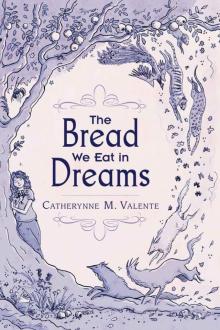


Feast, Page 9
Anissa Helou
½ teaspoon salt
¼ cup (60 ml) organic whole milk, at room temperature
½ cup (125 g) plain yogurt
2 tablespoons vegetable oil, for greasing the bowl and dough
FOR THE FILLING
1 tablespoon vegetable oil
1 small shallot, very finely chopped
1 small fresh green chili, seeded and very thinly sliced
2 cloves garlic, minced to a fine paste
8 ounces (225 g) ground lamb
1 tablespoon tomato paste
1 teaspoon ground cumin
1 teaspoon ground coriander
½ teaspoon paprika
Sea salt
TO FINISH
2 tablespoons (30 g) unsalted butter, melted
1. To make the dough: Mix the flour, sugar, yeast, and salt in a large bowl and make a well in the center. Add the milk and yogurt to the well. Mix lightly together before gradually bringing in the flour. Mix until you have a rough ball of dough.
2. Transfer to a lightly floured work surface and knead for 3 minutes. Roll the dough into a ball, invert the bowl over it, and let rest for 15 minutes. Knead for 3 more minutes or until smooth and elastic. Roll into a ball and place in an oiled bowl. Brush the dough with a little oil, cover the bowl with plastic wrap, and let rise in a warm, draft-free place for 1 hour, or until well risen and more or less doubled in size.
3. To make the filling: Heat the oil in a skillet over medium heat. Add the shallot and chili and sauté until the shallot is golden, then add the garlic. Stir for a minute or so, then transfer to a bowl. Add the meat, tomato paste, spices, and salt to taste to the bowl and mix well.
4. To make the naans: Divide the dough into 6 equal portions. Roll each into a ball. Place on a lightly floured surface and cover with a damp kitchen towel. Divide the filling into 6 equal portions and roll each into a ball. Take one ball of dough and flatten it slightly. Put the filling in the center and bring in the dough to cover the filling. Seal the edges and roll into a ball, then flatten with your hands until you have a thick disk. Using a rolling pin and flouring the dough slightly, roll out into a disk 6 to 7 inches (15 to 17.5 cm) in diameter. Press the tips of your fingers into the dough here and there to make indents and stop the bread from puffing up during baking.
5. To cook the naan on the stovetop: Heat a tawa or a griddle or a skillet over medium heat. Add the naan and cook for 2 to 3 minutes on each side.
6. To bake the naan: Preheat the oven to 475°F (250°C). Also preheat a pizza stone or a sturdy baking sheet. Slide the naan onto the hot stone or baking sheet and bake for 5 to 6 minutes, or until golden all over.
7. Brush with melted butter and serve immediately.
Uighur Scallion Pancakes
BING
CHINA
Uighur Chinese are Muslims, and their food reflects the restrictions of their religion and also the fact that they are Turkic people with a diet that includes wheat products such as noodles, pancakes, and bread. These pancakes have been adopted by the wider Chinese population and you find them on menus of Chinese restaurants that are not owned by Muslims. I had them first in a wonderful Muslim Chinese restaurant in Milpitas, California, where I was taken by Carolyn Phillips, the author of the wonderful All Under Heaven, and where I also tried hand-shaved noodles for the first time. I would have given a recipe for those here if they weren’t so difficult to make—unless you have been making them forever.
MAKES 6 INDIVIDUAL PANCAKES
FOR THE DOUGH
2¼ cups (270 g) unbleached all-purpose flour, plus more for kneading and shaping
1¼ cups (150 g) cake flour
Vegetable oil, for greasing the bowl
FOR THE FILLING
1 teaspoon sea salt
½ teaspoon ground toasted Sichuan peppercorns (optional)
¼ cup (60 g) chicken fat or melted ghee
3 tablespoons peanut oil or vegetable oil
4 scallions, very finely chopped (about ⅔ cup)
TO FINISH
Vegetable oil, for frying
1. To make the dough: Mix the flours in a bowl. Measure out ½ cup (60 g) of the flour mixture and set aside. Make a well in the center of the flour left in the bowl. Gradually add 1¼ cups (310 ml) warm water to the well, bringing in the flour as you go along until you have a rough ball of dough.
2. Transfer the dough to a lightly floured work surface. Dust both hands with a little flour and gently knead the dough for 3 minutes. Shape the dough into a ball, invert the bowl over it, and let rest for 15 minutes. Knead for 3 more minutes, or until the dough is very soft but manageable. Brush a clean bowl with a little oil and place the dough in the bowl. Cover with plastic wrap or a damp towel and let the dough rest for 20 to 30 minutes.
3. To make the filling: Put the reserved ½ cup (60 g) flour mixture in a bowl. Add the salt, Sichuan peppercorns (if using), chicken fat, and oil and mix well. Keep the scallions next to the flour mixture.
4. To shape the pancakes: Divide the dough into 6 equal portions and roll each portion into a smooth ball. Take one ball—keep the others covered so that they do not dry out—and with a Chinese or regular rolling pin, roll out the ball into a strip, as thin as you can without tearing the dough, about 18 inches (45 cm) long. Smear one-sixth of the flour mixture over the strip and sprinkle one-sixth of the scallions along the long side of the strip. Roll up the strip over the scallions to form a log, then pull this log gently to stretch it to 24 inches (60 cm) long. Coil the log into a round, a little like a cinnamon roll. Shape the rest of the dough in the same way until you have 6 coiled rounds. Roll out each coiled round until it is 8 inches (20 cm) in diameter. Traditionally these are made thicker but I like them thin and crisp.
5. To finish: Heat a skillet over medium-high heat and brush the bottom with a little oil. As soon as the oil is hot, place a pancake in the pan. Cook until the bottom is golden, 2 to 3 minutes. Flip, cover, and cook until the second side turns golden too. Remove to a plate lined with paper towels and keep the bread warm in a 250°F (120°C) oven for up to 20 minutes. Serve warm.
Bread-Based Dishes
* * *
Senegalese Bread Rolls
PETITS PAINS SENEGALAIS
SENEGAL
Senegal was a French colony until the country gained its independence in 1960, but one relic left over from the French occupation is their predilection for crusty bread, be it their own version of the French baguette, which they call tapalapa and make with a mixture of different flours, or these gorgeous rolls, which are pretty straightforward and very simple to make.
MAKES 8 INDIVIDUAL BREADS
Just over 4 cups (500 g) unbleached all-purpose flour, plus more for kneading and shaping
1 packet (7g/2¼ teaspoons) instant (fast-acting) yeast
1 teaspoon fine sea salt
¼ cup (60 ml) extra-virgin olive oil
1. Mix the flour, yeast, and salt in a large bowl and make a well in the center. Add the oil to the well and, with the tips of your fingers, rub the oil into the flour. Gradually add 1⅓ cups (325 ml) warm water, bringing in the flour as you go along. Knead until you have a rough, rather sticky ball of dough.
2. Transfer the dough to a lightly floured work surface. Sprinkle a little flour on the dough and knead for 3 minutes. Shape into a ball, invert the bowl over the dough, and let rest for 15 minutes. Knead for 3 more minutes, or until the dough is smooth and elastic and rather soft. Shape the dough into a ball and place in an oiled bowl, turning it to coat all over with oil. Cover with plastic wrap and let rise in a warm, draft-free place for 1 hour, or until more or less doubled in size.
3. Transfer the dough to your work surface. Divide into 8 equal portions, each weighing about 3½ ounces (100 g). Roll each portion of dough into a ball. Cover with a very damp kitchen towel and let rest for 45 minutes.
4. Preheat the oven to 450°F (230°C).
5. Roll one ball of dough into a log about 18 inches (45 cm) long and ¾ inch (2 cm) thick. Coil
the log into a spiral and transfer to a nonstick baking sheet (or a regular baking sheet lined with parchment paper or a silicone baking mat). Make the other rolls the same way.
6. Bake for 20 to 25 minutes, or until golden brown. Let cool on a wire rack. Serve as is or reheated.
Arabian “Pasta” with Meat and Vegetables
MARGUGA
QATAR | UNITED ARAB EMIRATES | BAHRAIN
Marguga means “thinned” or “rolled out,” and traditionally the dish is made with thin strips of dough. I like to call it Arabian “pasta,” because it was traditionally made with dough. However, most home cooks nowadays no longer use fresh dough. Instead they make marguga with already baked bread, such as Iranian barbari or lavash, which they cut into long thin strips. All of those I have spoken to have assured me that the dish is just as good made with baked bread and I am happy to take their word for it as, like them, I am all for saving time in the kitchen. You find this dish in Qatar, the United Arab Emirates, and Bahrain as well as in Saudi Arabia where it goes by the name of mataziz. I have had both the Qatari and Emirati versions and they differ only slightly, with the spicing of the Qatari version being a little stronger than that of the Emirati version.
SERVES 4 TO 6
1 whole organic chicken (3 pounds 5 ounces/1.5 kg), skinned and cut into 8 pieces
1 cup (250 ml) sunflower oil, plus more for deep-frying
2 medium onions (10½ ounces/300 g total), finely chopped
1 whole star anise
8 whole cloves
3 fresh curry leaves
3 cloves garlic, minced to a fine paste
½ teaspoon minced fresh ginger
1 green chili, slit lengthwise halfway down the middle
5 green cardamom pods
1 cinnamon stick
1 tablespoon b’zar (Arabian Spice Mixture)
1 tablespoon ground turmeric
1 tablespoon paprika
1 teaspoon ground coriander
1 teaspoon ground cumin
½ teaspoon ground cardamom
½ teaspoon ground cinnamon
½ teaspoon ground fennel
¼ teaspoon red pepper flakes
Sea salt
4 large tomatoes (7 ounces/200 g total), peeled and processed in a food processor until completely pureed
½ cup (125 g) tomato paste
2 large zucchini (7 ounces/200 g total), cut into large chunks
2 large potatoes (7 ounces/200 g total), cut into large chunks
2 large carrots (7 ounces/200 g total), cut into large chunks
1¼ pounds (550 g) peeled pumpkin, cut into large chunks
½ green bell pepper, cut into chunks
3 large or 6 small black dried limes, pierced in a few places
4 cups (1 liter) boiling water
2 tablespoons finely chopped fresh cilantro
2 tablespoons finely chopped fresh flat-leaf parsley
2 tablespoons finely chopped fresh dill
½ to 1 very large Iranian Flatbread, cut into long narrow strips
1 large globe eggplant, sliced into medium-thick rounds
1. Put the chicken pieces in a skillet and place over medium heat to dry-roast them and get rid of any excess liquid and smell. (I doubt you will need to do this in the West, but this step is considered essential in Qatar.)
2. Heat the oil in a large pot over medium heat. Add the onions and fry until golden, about 10 minutes. Add the star anise, cloves, and curry leaves. Then add the chicken, garlic, ginger, and whole green chili. Sauté for a couple of minutes.
3. Add the whole spices, ground spices, salt to taste, the tomato pulp, tomato paste, zucchini, potatoes, carrots, pumpkin, bell pepper, and dried limes and stir for a couple of minutes. Add the boiling water, cover, and let bubble gently for 40 minutes.
4. Add the fresh herbs and another 2 cups (500 ml) water. Cover and cook for 30 minutes. Add the bread (to taste depending on how silky you like your stew) and cook, covered, for 15 minutes, or until the bread has softened and is somewhat dissolved in the sauce.
5. Meanwhile, deep-fry the eggplant. Set a wire rack in a rimmed baking sheet. Pour 2 inches (5 cm) sunflower oil into a deep frying pan. Heat the oil over medium heat until hot (if you drop a piece of bread in the oil, the oil should immediately bubble around it). Add the eggplant and fry until golden brown. Remove to the wire rack to drain the excess oil.
6. Transfer the marguga to a large shallow serving dish and arrange the fried eggplant all over. Serve very hot.
Saudi Eggplant Fatteh
FATTET BATENJAN ASSWAD
SAUDI ARABIA
The word fatteh comes from the Arabic verb fatta, meaning “to break up” or “to crumble,” and it refers to the bread element of this composite dish made of bread, meat (lamb, chicken, or sheep’s trotters), and/or chickpeas and yogurt and topped with toasted pine nuts. The bread is toasted or fried, then broken up and spread on the plate before being covered with the other ingredients. The recipe varies from country to country, and within each country there are different ways of making fatteh. The Arabian Gulf version is known as tharid and it is reputed to have been the Prophet Muhammad’s favorite dish. The Egyptian version is somewhat more complex, with added rice and tomato sauce, while the Saudi version below is made with fried vegetables. Most versions of fatteh are main courses, but when made with chickpeas alone, it becomes a breakfast dish in both Lebanon and Syria.
SERVES 4
2 tablespoons extra-virgin olive oil
1 small onion (about 3½ ounces/100 g), thinly sliced
1 medium tomato (about 3½ ounces/100 g), cut into small dice
½ teaspoon finely ground black pepper
Sea salt
½ cup plus 1 tablespoon (140 ml) sunflower oil
3 medium zucchini (about 10½ ounces/300 g in total), cut into sticks as for French fries
2 small Japanese eggplants (about 5 ounces/150 g in total), cut into sticks as for French fries
2 cups (17 ounces/500 g) Greek yogurt
3 cloves garlic, minced to a fine paste
2 medium pita breads, split horizontally into 4 disks, or 4 Turkish durum breads, toasted in a medium oven until golden brown
¼ cup (50 g) pine nuts, toasted in a hot oven for 5 minutes
1. Heat the olive oil in a large skillet over medium heat. Add the onion and sauté until golden, about 10 minutes. Add the tomato, black pepper, and salt to taste and cook until the tomatoes have softened but have not turned completely mushy.
2. Set a fine-mesh rack over a rimmed baking sheet or line it with paper towels. Heat the sunflower oil in another large skillet over medium heat. Fry the zucchini until cooked through, crisp and golden. Place on the rack to drain or drain on paper towels. Sprinkle with salt to taste. Repeat with the eggplants.
3. Mix the yogurt with the garlic and season with salt to taste.
4. To assemble the fatteh: Put a disk of toasted bread on a plate. Arrange twice as much zucchini as eggplant in a nice pile in the center of the bread. Top with one-quarter of the onion-tomato mixture. Drizzle one-quarter of the yogurt over the vegetables without entirely covering them. Garnish with one-quarter of the pine nuts. Quickly make the other 3 plates in the same way. Serve immediately.
Saudi Meat Fatteh
LUHUH
SAUDI ARABIA
In this variation on the Saudi Eggplant Fatteh, the bread element is pancakes similar to anjero (Somali Pancakes) or the sweet hand pies, or qatayef, rather than toasted bread. Usually the pancakes are bought from specialist makers but I sometimes use English crumpets that I cut in half. And instead of the vegetables, there is a layer of ground meat cooked in a tomato sauce. In the Syrian town of Hama, they have a similar meat and yogurt dish that is served without the bread element.
SERVES 6
¼ cup (60 ml) vegetable oil
2 small onions (7 ounces/200 g total), halved lengthwise and cut into thin wedges
4 cloves garlic, minced to a fine paste
1 pound 2 ounces (500 g) ground lamb shoulder
1½ teaspoons finely ground black pepper
½ teaspoon ground cumin
Pinch of ground cinnamon
Two 14-ounce (400 g) cans whole peeled tomatoes, drained and finely chopped
Sea salt
1¾ pounds (800 g) small pancakes (see headnote)
2 cups (17 ounces/500 g) Greek yogurt
Cumin seeds, for garnish
1. Heat the oil in a large skillet over medium heat. Add the onions and sauté, stirring occasionally, until golden. Add the garlic and sauté until fragrant.
2. Add the ground meat and cook, breaking up any lumps, until it is no longer pink, about 5 minutes. Add the spices, tomatoes, and salt to taste and cook until the sauce has thickened.
3. Spread out the qatayef on a serving platter. Spoon the meat mixture all over, leaving some of the edges showing. Cover with yogurt, leaving bits of meat showing to break the white. Sprinkle with cumin seeds and serve immediately.
Lebanese Lamb Fatteh
FATTET GHANAM
LEBANON
This is the Levantine version of tharid. Of all the versions of fatteh, it is the lightest, especially if you toast the bread as I do instead of frying it.
SERVES 4
¾ cup (150 g) dried chickpeas, soaked overnight in water to cover by 1 inch (2.5 cm) with ¾ teaspoon baking soda
2¼ pounds (1 kg) lamb leg or shoulder, trimmed of fat, cut into medium chunks
2 cinnamon sticks
Coarse sea salt
2 ounces (60 g) pine nuts
1 large pita bread, split into 2 disks and toasted
1 clove garlic, minced to a fine paste
3½ cups (28 ounces/875 g) Greek yogurt
Fine sea salt
1. Drain and rinse the chickpeas. Put in a pot and with fresh water to cover by about 1 inch (2.5 cm) and bring to a boil over medium heat. Cover, reduce the heat to low, and simmer for 1 hour, or until they are tender.














